By Dan Weisz
I don’t golf but I do go birding on a local golf course monthly with friends. Last week the course was closed for winter grass seeding so we had a bit more freedom to wander as we wished and to walk close to water on the course. It was a good morning. What we saw are likely to be seen at any of the Foothills Golf Courses and any body of water in parks around the Tucson area.
We were surprised to find a visible Pied-billed Grebe nest. These nests are usual hidden deep in the reeds. Two large eggs were visible.
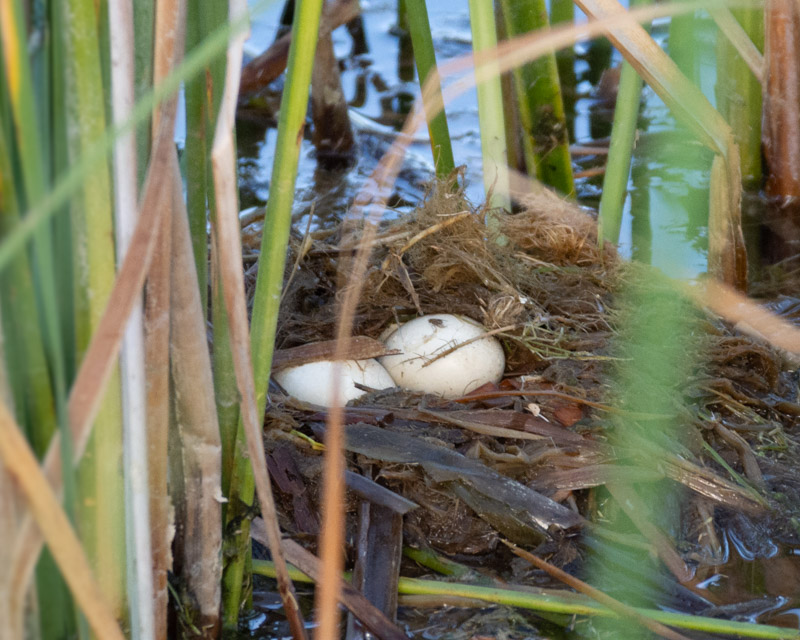
The adult Pied-billed Grebe watched closely as we looked at the nest from the shore. She remained about 15 feet from the nest and ‘paced’ in the water back and forth while we stood there.
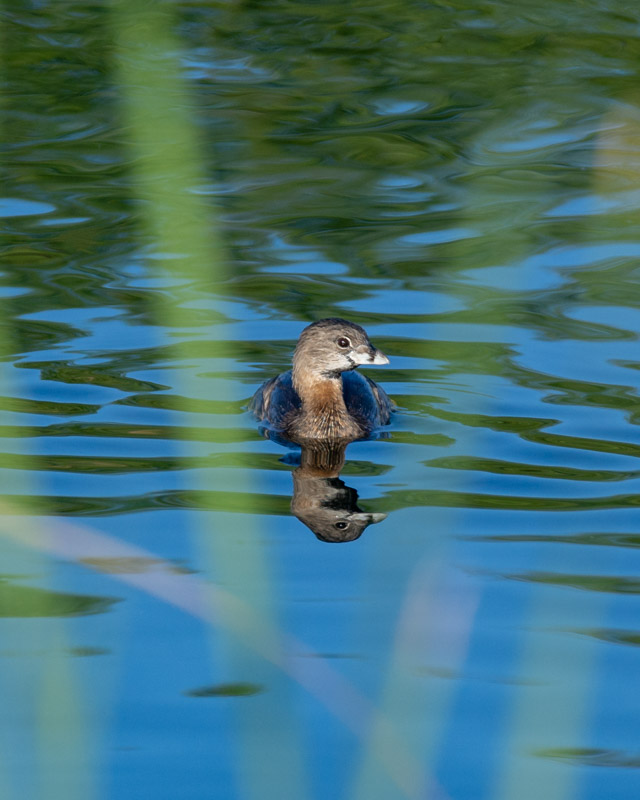
We did look away for a moment, and when we turned back towards the nest we were surprised to see the the Grebe had snuck back and covered the nest. The allaboutbirds.org site describes Pied-billed Grebes as “part bird, part submarine”. The adult grebe probably waited for us to look aside and then swiftly swam underwater, putting a ‘lid’ on the nest to hide it from the human predators she was watching, and then retreating. While we didn’t see this happen, we certainly saw what she had done while we weren’t watching.
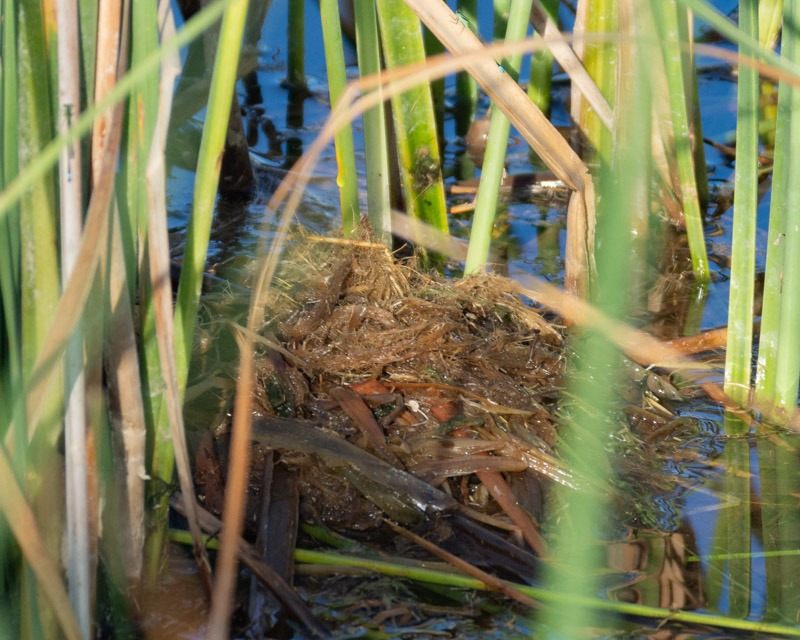
A Vermilion Flycatcher was on a typical hunting perch. We saw several on the course.
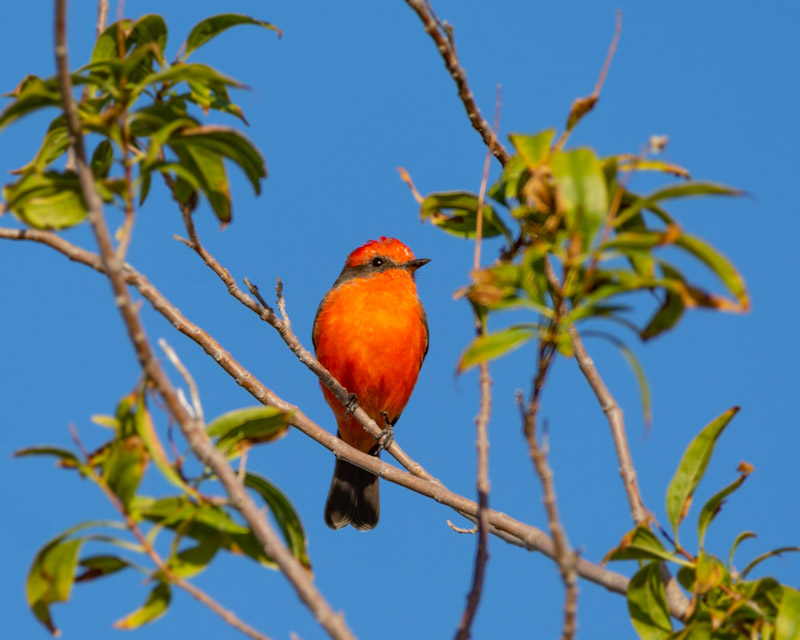
We saw several Black Phoebe’s on the course as well. Black Phoebes are flycatchers who are almost always found near water. They sit upright on low perches and make short flights to catch insects.
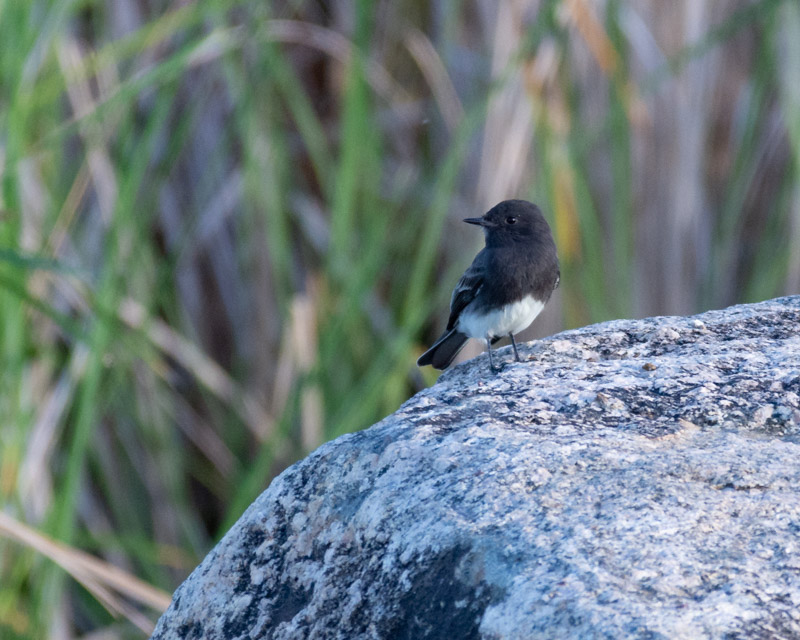
An American Kestrel was perched on the tip of a dead tree searching for prey. The slate blue head and wings tell us this is a male. While we have American Kestrels year-round in Tucson, we also have many Kestrels who migrate to our area during the winter. At this golf course, we never see kestrels in the summer so this bird is likely a winter visitor. Kestrels are the smallest falcons in America.
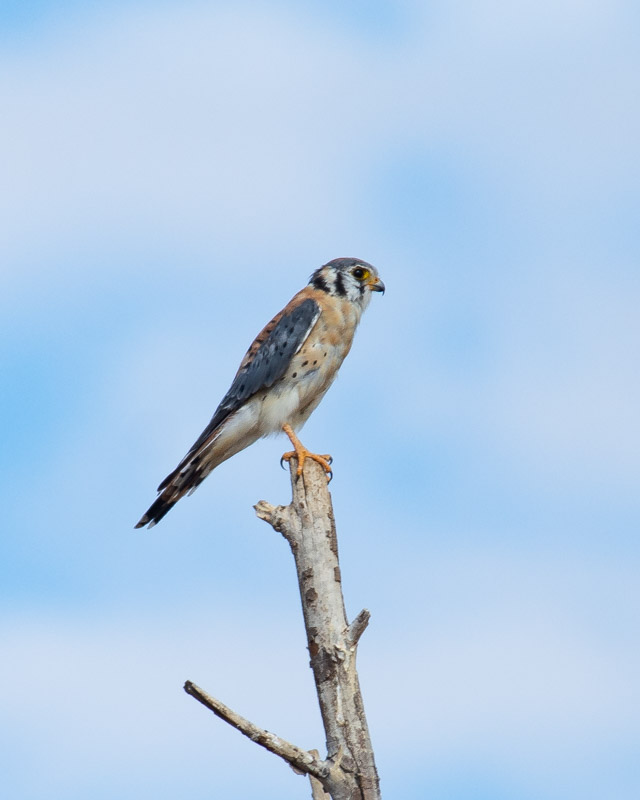
Many dragonflies were out and around. This one is a female Flame Skimmer. The her color and the orange streak on the leading edge of her wings helps to ID her.
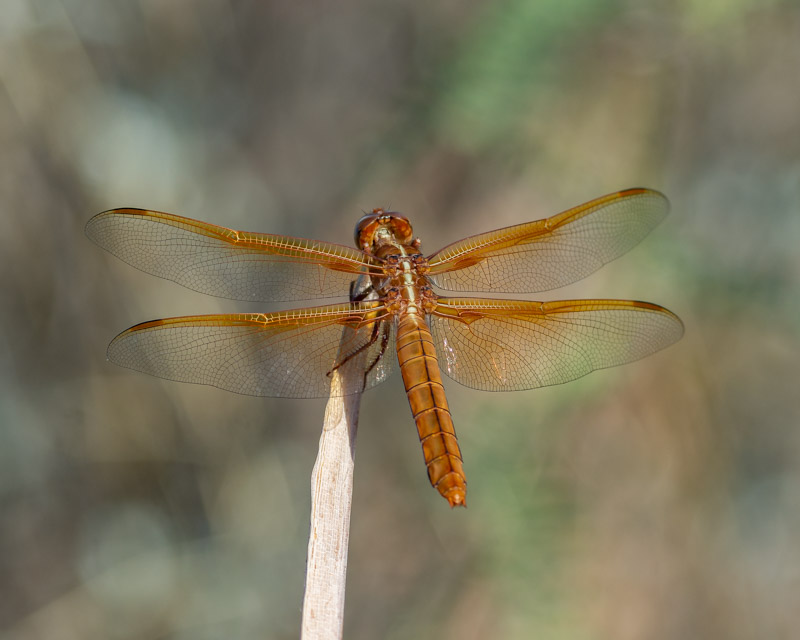
This dragonfly is a female Neon Skimmer. She is tan/orange with a noticeable white stripe down her thorax and she has mostly clear wings.
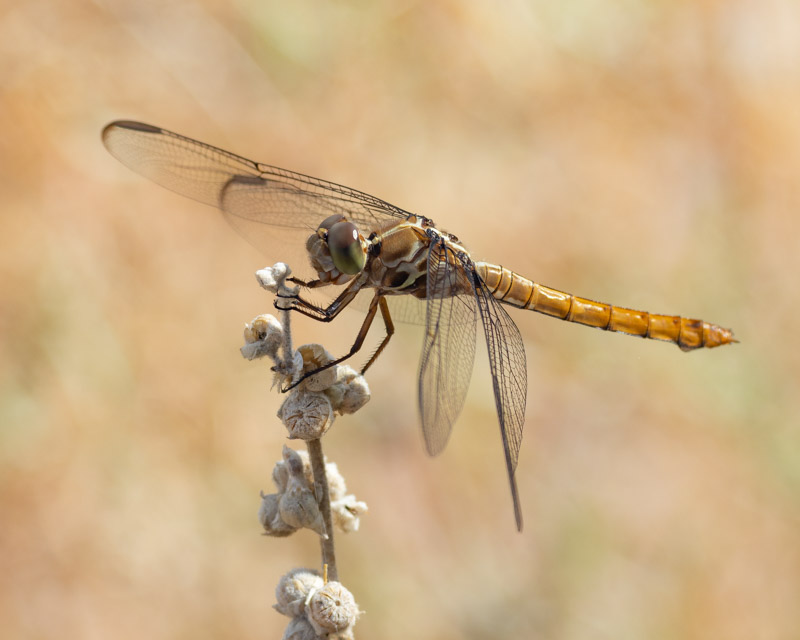
Another look at the female Neon Skimmer.
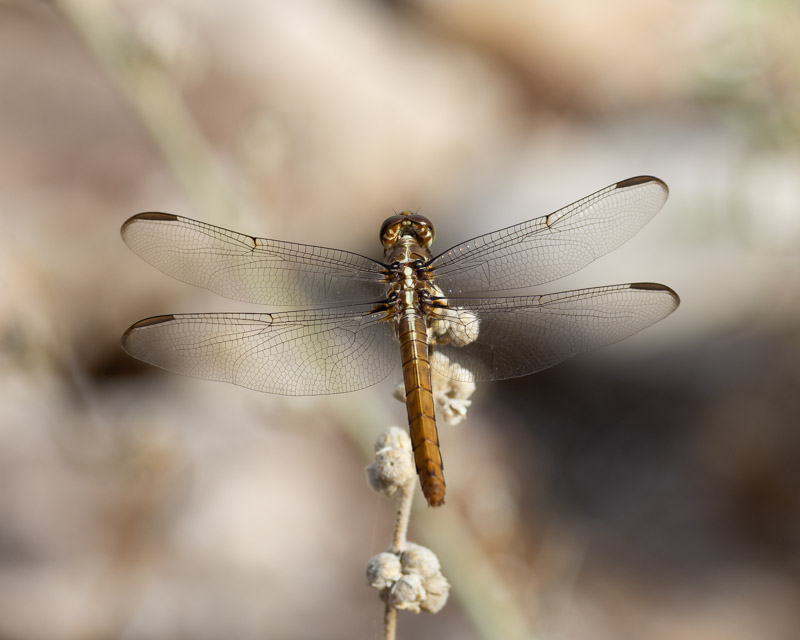
American Coots are very common at almost any body of water. They are waterbirds but are not ducks and do not have webbed feet. Normally, their behavior is nothing special as they nibble on vegetation. However, their fights are full of fury. They will fight over territory and fight loudly and vigorously. When they fight, they will rear up and attack each other with their feet.
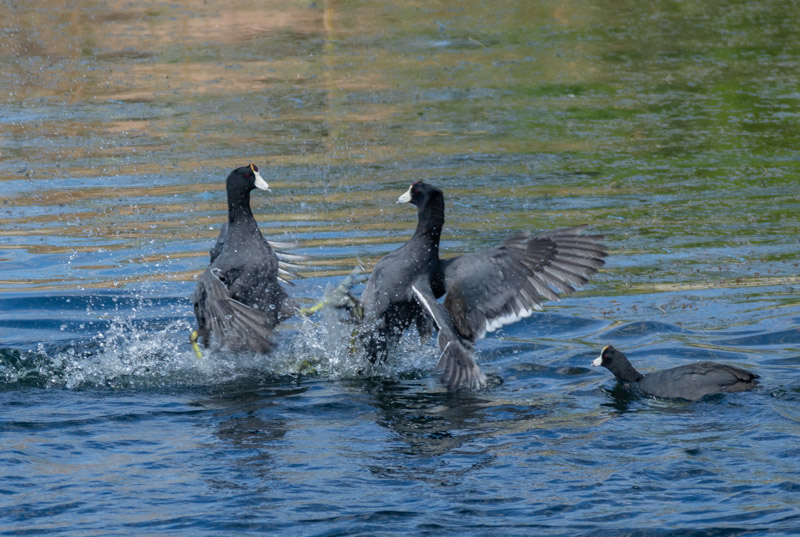
They will strike with their feet, clawing at the breast of their opponent. They spread their wings and hold them back in an attempt to unbalance the other bird.
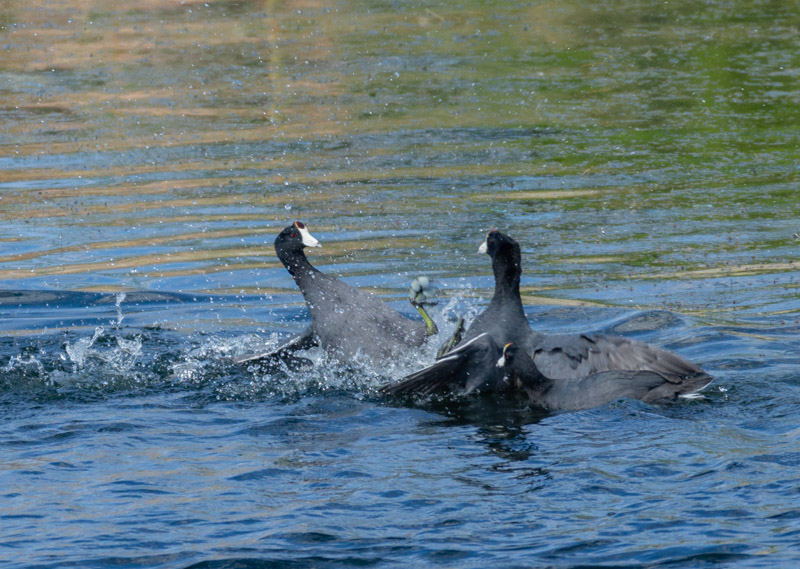
The weaker coot is usually forced on its back or forced underwater.
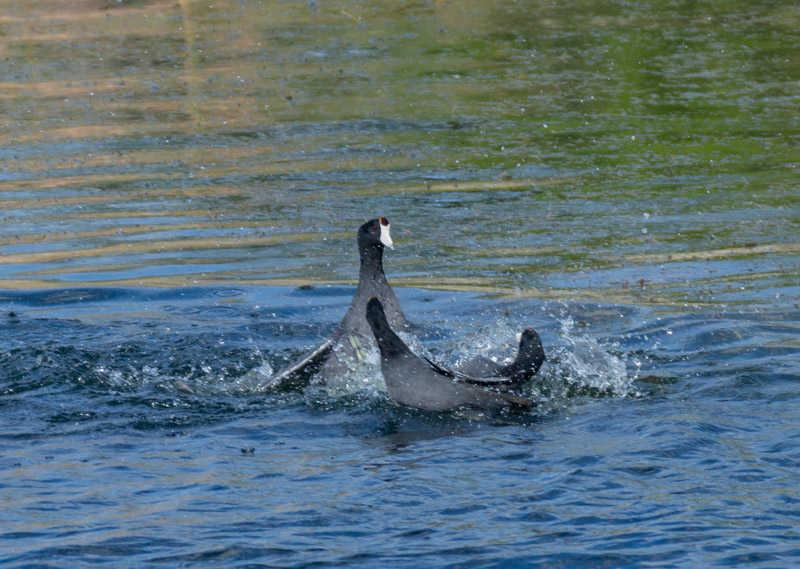
And the winner is….!! The loser will swim away, sometimes underwater and sometimes above and then calm returns to the pond.
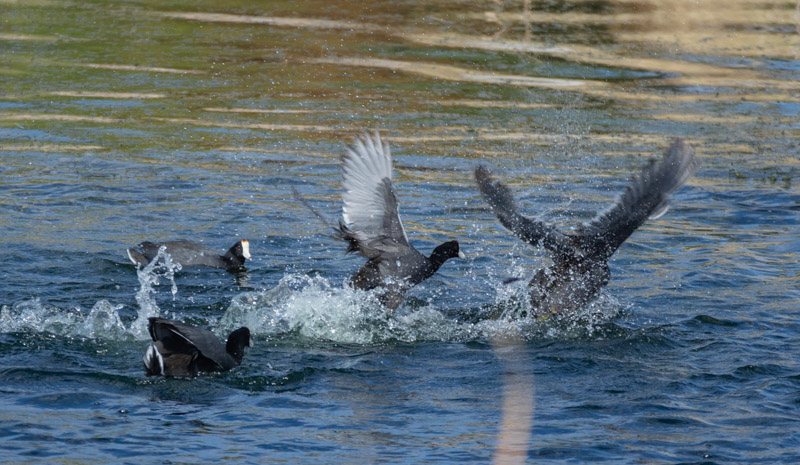
Return to Foothills Clusters Home
